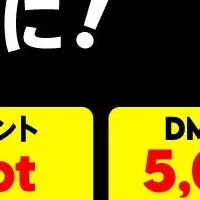
Huawei and ITU Release Groundbreaking White Paper on Lithium Batteries for Telecom Sites
Introduction
In a significant stride towards sustainable energy solutions, Huawei and the International Telecommunication Union (ITU) have jointly launched a white paper that addresses the critical issues surrounding lithium battery usage in telecommunications sites. This initiative emerges from the recent Huawei Global Digital Power Summit held at MWC 2025, themed "AI Powering a Greener ICT." The summit featured esteemed operators, industry leaders, and experts exploring innovative pathways to enhance energy efficiency and sustainability in the ICT sector.
Context of the White Paper
Charles Yang, Huawei’s Senior Vice President and President of Global Marketing, Sales, and Services, underscored the urgent need for the telecommunications sector to transition towards greener practices amidst a challenging climate crisis. The telecommunications industry emits approximately 600 million tons of carbon dioxide annually, which accounts for about 2% of global emissions. As service providers aim for carbon neutrality, they encounter formidable challenges, including rising emissions, excessive energy consumption, and increasing energy costs.
To combat these issues, Huawei is leveraging digital and power electronic technologies to furnish carbon-reducing solutions across all practical scenarios, transforming energy consumers into active producers and advocates.
Real-World Applications and Success Stories
Through its initiatives, Huawei has already enabled multiple telecom operators worldwide to significantly reduce energy consumption and CO2 emissions. For instance, in Pakistan, Huawei introduced a photovoltaic (PV) solution combined with energy storage systems (ESS), which effectively replaced traditional generators, leading to a staggering 96% reduction in fuel consumption per site. This green transition across 1,000 sites is projected to decrease energy operating costs by 38% for those operators.
In the Czech Republic, Huawei’s innovation has helped lengthen backup times while boosting revenues through market participation via ESS. Similarly, in Finland, collaboration with a telecom operator has facilitated the integration of ESS at telecom sites and surrounding residential, business, and industrial areas. This strategic move has opened up access to frequency response services in the electricity market, significantly augmenting revenue streams. Further, in Inner Mongolia, China, Huawei proposed a subsystem decoupling solution aimed at modernizing a customer’s AI data center, expediting the deployment of large language model services.
Over the years, Huawei Digital Power claims to have empowered customers in the ICT sector to generate 2.28 billion kWh of green electricity and save 81.6 billion kWh, translating to a remarkable reduction of nearly 40 million tons of CO2 emissions, equating to planting about 54.46 million trees.
The White Paper’s Highlights
A pivotal feature of the summit was the unveiling of the white paper titled "Lithium Batteries for Telecom Sites," marking the first publication of its nature globally. This document advocates for the adoption of high-quality lithium batteries, emphasizing the necessity for these batteries to meet exceptional performance standards and integrating robust safety systems.
Moreover, the paper examines safety concerns associated with lithium batteries in telecommunication settings, presenting the latest research and best practices. It includes guidelines aimed at promoting the secure and efficient application of lithium batteries across the communications sector. Reyna Ubeda, an engineer from ITU-T SG5, reiterated the importance of high-quality, safe lithium batteries for enhancing energy storage efficiency and reducing the overall carbon footprint of ICT operations.
The white paper further introduces "Data Center Lithium-ion Battery Safety Application" to standardize and enhance the large-scale deployment of lithium-ion batteries in data centers.
Conclusion
We stand on the brink of a new era characterized by all-encompassing intelligence applications that present fresh opportunities and challenges. As the global ICT sector anticipates these shifts, Huawei Digital Power is dedicated to ongoing innovation and collaboration with like-minded partners toward creating new avenues for business value while striving for a sustainable future. This white paper serves not only as a guideline for current lithium battery applications but also as a catalyst for further advancements in the telecommunications industry, underpinning a greener future for our planet.
Topics Telecommunications)










【About Using Articles】
You can freely use the title and article content by linking to the page where the article is posted.
※ Images cannot be used.
【About Links】
Links are free to use.